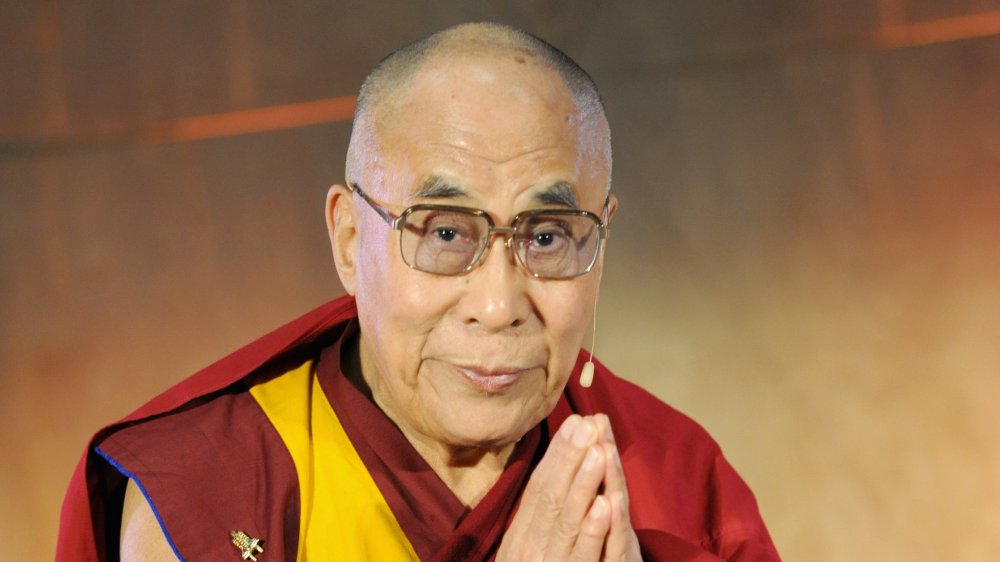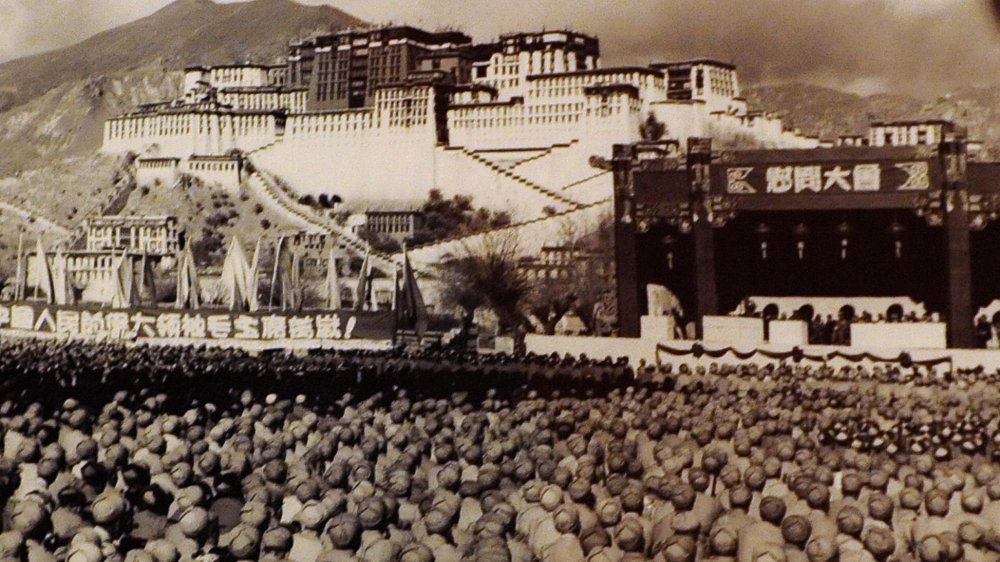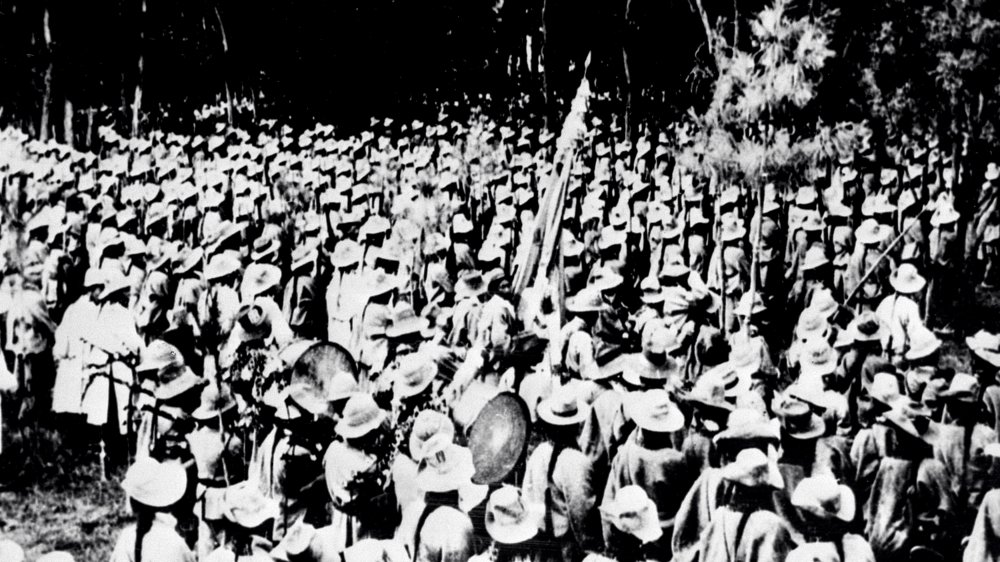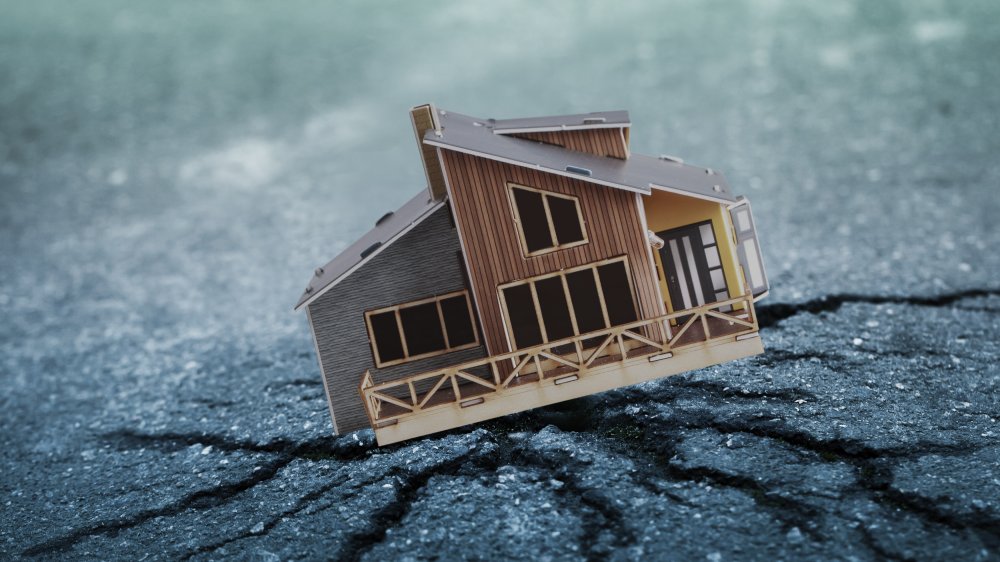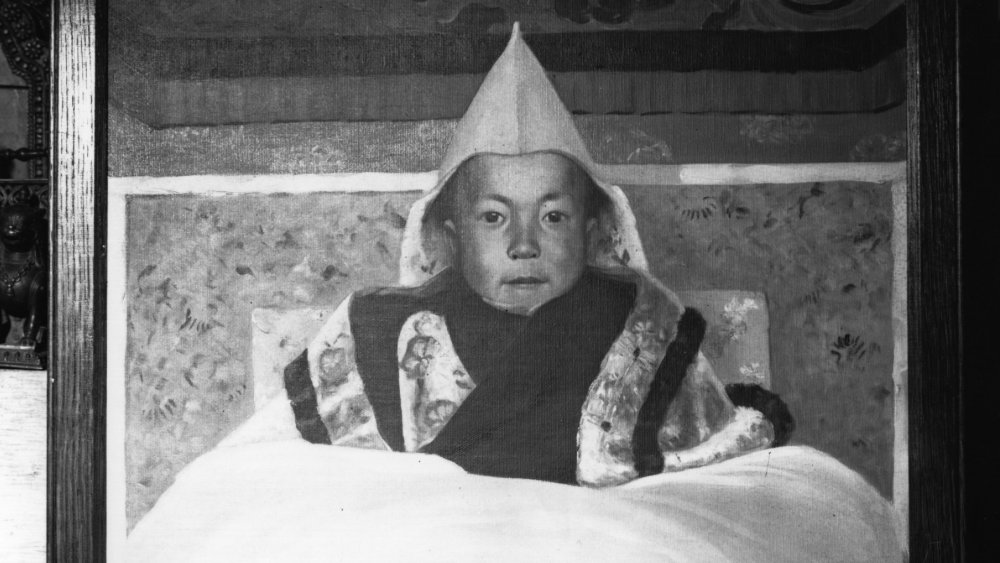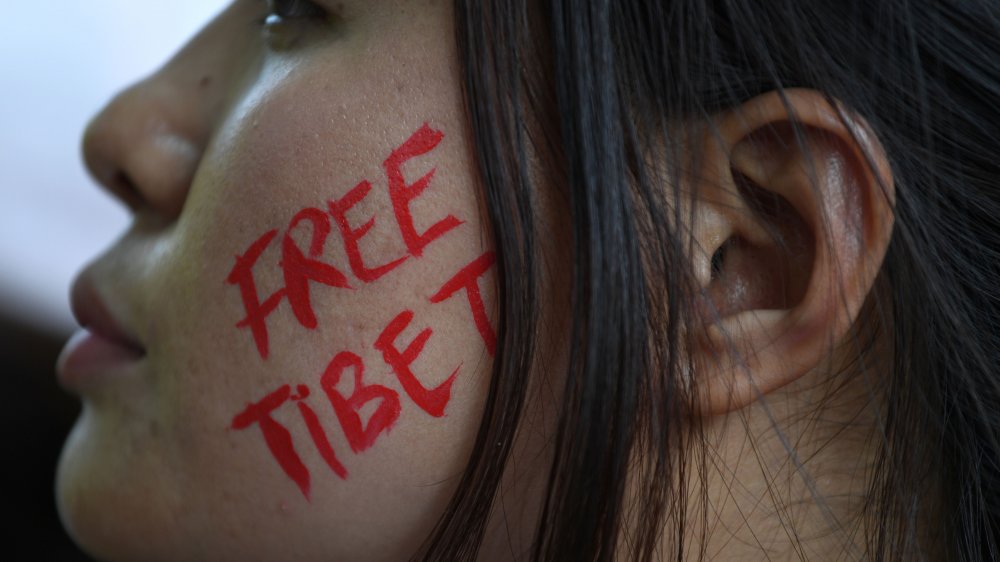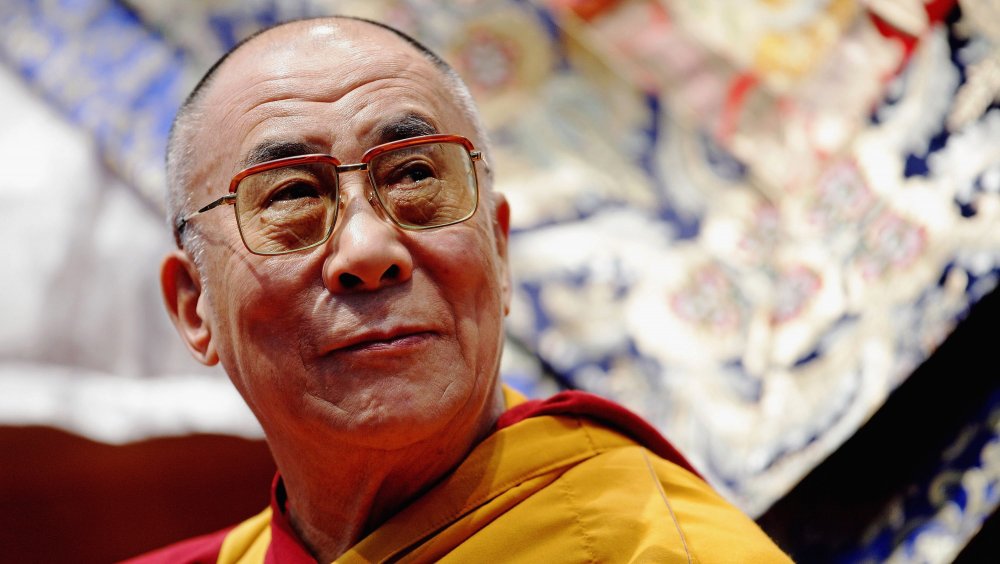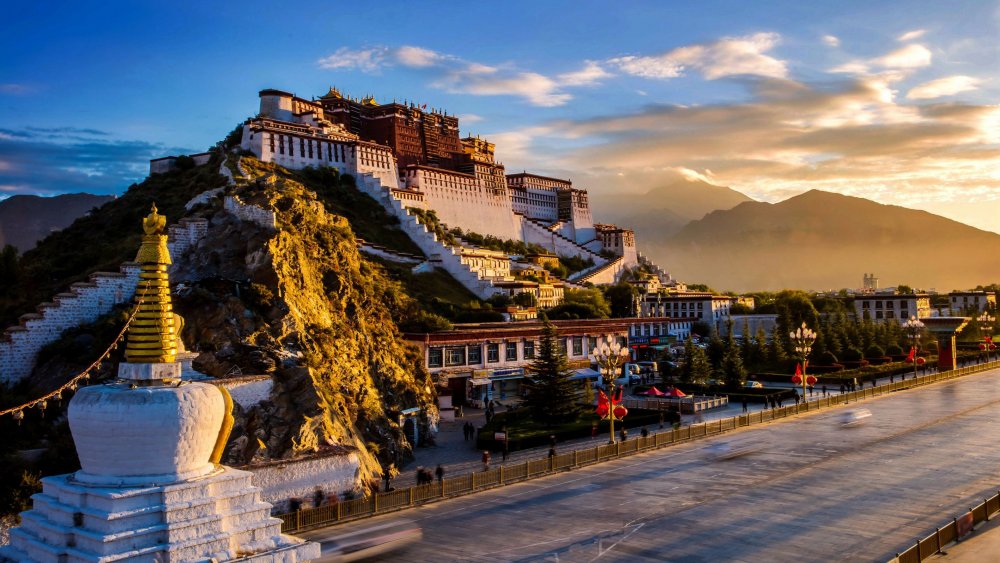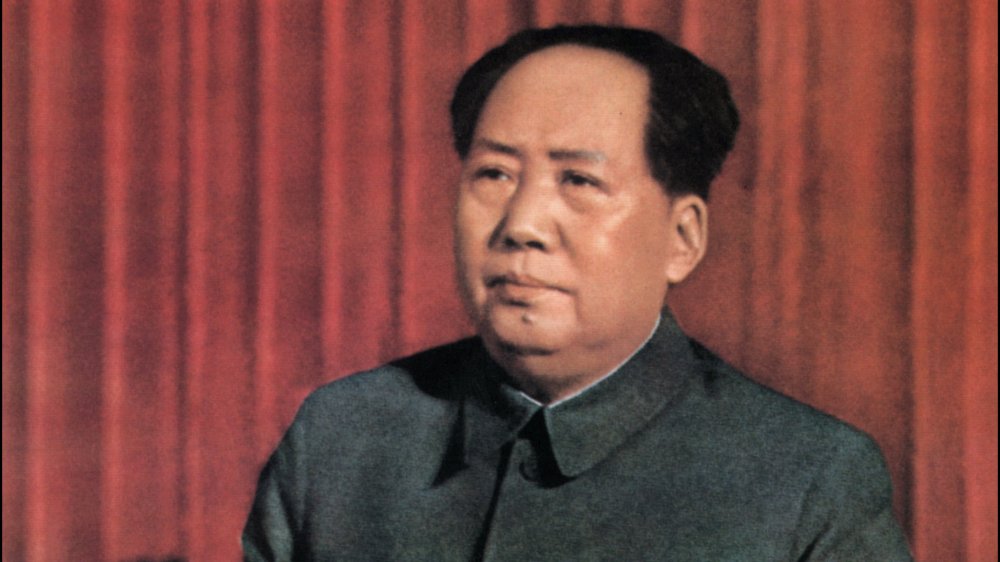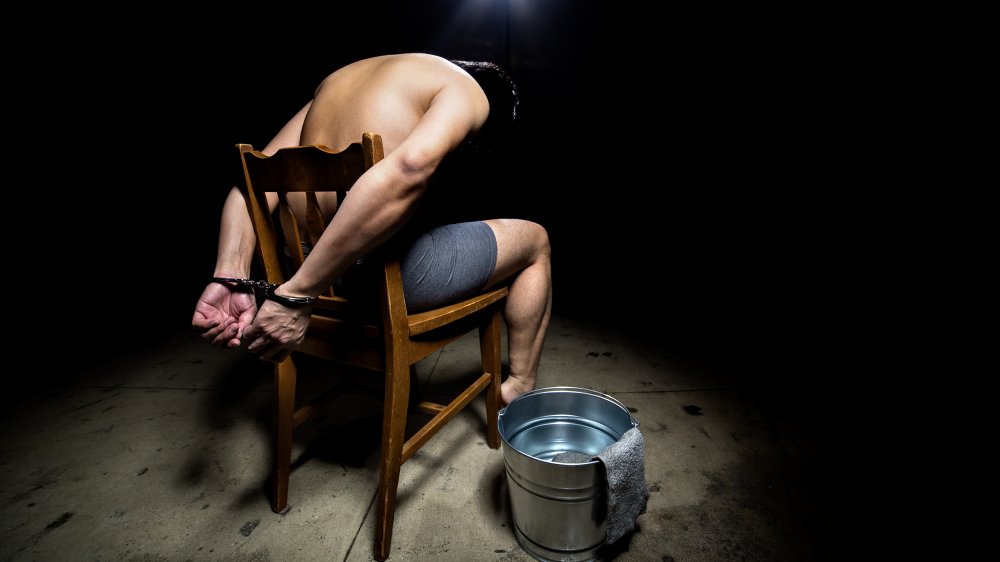The Tragic Truth About Tibet
What do you know about Tibet? It's one of those high-altitude Himalayan countries like Nepal and Bhutan, and the Dalai Lama is from there? People call it "the roof of the world?" Its capital is Lhasa? All of that is true, but it doesn't even begin to scratch the surface.
As the BBC's profile of Tibet tells us, the country's fate has been largely intertwined with the fact that it lies geographically adjacent to China, which claims "centuries-old sovereignty" over Tibet. A series of historic twists and turns have led to a situation where Tibet lives under China as an "autonomous region" of the global superpower, though many of the country's residents feel that the Dalai Lama is their true leader. Does that sound like a recipe for turmoil and tragedy? If you answered yes, you just described Tibet's history in a nutshell. Let's dig a bit deeper, and take a look at the tragic history of Tibet.
The Mongol invasion of Tibet
In the 13th century, Tibet found itself in trouble with the era's most fearsome party crashers: The Mongols. As Matthew T. Kapstein tells us in his book, The Tibetans, Mongol movements around Asia had created a massive pincer around Tibet, and warnings about an impeding invasion started making rounds. In 1239, the Mongols finally made their move, when the army of Dorta the Black tore through into the central parts of Tibet, ransacking the monastery of Reting in the process.
As a small consolation to the grim situation, the Tibetans knew to play to their strengths. They were aware of the fearsome reputation of the Mongols, and some Mongol nobles had in turn become fascinated by Tibet's take on Buddhism. In 1244, the Mongol leader Kötan summoned Tibet's most revered spiritual leader, Sakya Pandita, to his court, where the latter spent the rest of his days. As a result, the Sakya's people, Sakyapa, eventually became "effective rulers" of Tibet. However, religion-based goodwill or not, Tibet was still very much set to find itself under the Mongol thumb. If there was any questions about that, those were definitely answered by Möngke Khan, who invaded Tibet in 1252.
China comes knocking on Tibet's door
Tibet shares a land border with China, though the definition of said border would probably differ considerably depending on whether you ask a Tibetan or a Chinese person about it. On January 1, 1950, China declared sovereignty over Tibet, which started a period the University of Arkansas defines as "the crisis phase." Indeed, the year did not proceed very smoothly. On March 7, the countries' representatives met in India, and China demanded that Tibetan officials turn up in Beijing by September 16. Tibet refused to comply, and in October, China invaded Tibet.
From that point on, things went ... pretty badly, really. Tibet requested military help from India, and the country's spiritual leader, the Dalai Lama, brought his country's case to the United Nations, which condemned the attack. However, all of this did little to stop China. By 1956, the CIA was in on the action, funding Tibetan rebels and providing them with equipment. As History tells us, the year saw an attempt at revolt in many areas of Eastern Tibet, and by 1958, violence was in the air in the capital, Lhasa, to the point where China threatened to bomb the city if things didn't calm down. Spoiler: They did not calm down.
Tibet's 1959 National Uprising
If there's a single day that defines Tibet's current situation, the Free Tibet website tells us it's March 10, 1959. Tibetans and people sympathetic to their cause commemorate the date as National Uprising Day.
According to the History article on the subject, March 10, 1959, was when 300,000 Tibetans surrounded the Dalai Lama's summer palace, Norbulinka, in an act of open rebellion against the Chinese. The motivation behind this gigantic scene was the country's fear that the Chinese occupation forces were plotting to kidnap the Dalai Lama and take him to Beijing. The young Dalai Lama had been invited to visit the local People's Liberation Army headquarters for an evening of tea and theater, with the caveat that he must come alone. Evidently, Tibetan loyalists smelled a rat, and the masses gathered to prevent His Holiness from taking up the offer.
The show of force quickly turned into a bloodbath. By March 17, the Tibetans had spirited the Dalai Lama away to India, and China aimed some serious firepower at the gathered Tibetans. By March 19, there was open combat between Tibetan rebels and the Chinese troops, with the former hopelessly outgunned and outnumbered. On March 21, the Chinese forces opened artillery fire on the poor folks gathered at the palace. China then went on to take severe measures against Tibetan resistance, execute the Dalai Lama's bodyguards, and wreck the capital's biggest monasteries. All in all, tens of thousands of people died.
The Assam-Tibet earthquake
Not every tragedy that has befallen Tibet has involved political or military conflict. There have also been natural disasters. As Live Science tells us, in 1950, eastern Tibet and the neighboring Assam region of India had the questionable honor of hosting one of the ten biggest earthquakes in recorded history. This incredibly devastating magnitude 8.6 quake, the epicenter of which was in Tibet, plagued the area in numerous ways. Apart from the obviously heavy tremors, the earthquake created cracks on the ground, along with sand volcanoes and huge landslides. The landslides, in particular, created a nasty secondary attack by blocking rivers with debris. When the river eventually forced its way through, the ensuing rush of water overwhelmed whole villages, killing hundreds.
Though the Assam area took the brunt of human suffering — hence the earthquake's name — this was obviously no picnic for Tibet, either. The United States Geological Survey website estimates the disaster's total human cost at 1,526 deaths. At least 780 people died in eastern Tibet, and a village called Yedong was completely "washed away" by the Brahmaputra river.
The Dalai Lamas keep dying mysteriously
The Dalai Lama is the most esteemed religious leader in Tibet, but as Mike Nash of Smithsonian Magazine tells us, that doesn't mean everyone has good intentions towards the holder of the position. In fact, no less than four Dalai Lamas have met a mysterious end over the years, and as for what Mr. Nash thinks about their fate, well, his article is called "Murder in Tibet's High Places."
It turns out that the Potala Palace, the winter residence of the Dalai Lama, has seen more than its share of political drama. During the early parts of the 19th century, this may or may not have led to several Dalai Lamas falling victim to the power struggle hidden within the palace's confines. The country was in a period of political turmoil, and the eighth Dalai Lama had lived long and steered clear of secular affairs, opting to let other, lesser Lamas do the governing as regents. However, his successors all displayed more interest in earthly affairs ... and just so happened to meet premature ends. No less than four consecutive Dalai Lamas, the ninth to the 12th, fell fatally ill at a young age, in ways that could technically have been natural (though one source claims the 10th Dalai Lama died when the roof of a bedroom collapsed on him). However, this eyebrow-raising series of deaths over a short span of time has led some to believe these were murders by power-hungry nobles.
Tibetan activists or organized crime?
On March 18, 2018, Yanan Wang of Associated Press reported that China had a new toy in its ever-expanding toolkit against Tibetan activists. It was a list known as "21 kinds of dark and evil forces," and police officers were reading it out in public squares, airports, and schools.
The list of Tibet's new "criminal targets" is technically aimed at organized crime, except the "dark and evil deeds" happen to included things like trying to preserve the Tibetan language and supporting Dalai Lama — you know, activist stuff. The list also appeared to court support for China from low-level local jurisdictions, and to allow officials to take in a much wider range of perceived malcontents than before.
The program started in January 2018, and in just a month, over 10,000 people had already been taken in. The fact that some of the targeted people reportedly appear to be folks who merely have "complaints about medical malpractice," and who organised petitions against officials, is presumably just an "unfortunate coincidence."
A Tibetan leader in exile
As the BBC tells us, the Dalai Lama, a title that means "Ocean of Wisdom," is kind of a big deal in Tibet. He's the highest-ranking monk in Tibet's version of Buddhism, which traditionally puts him in charge of the whole country. Unfortunately, the 14th and current Dalai Lama, Tenzin Gyatso, finds himself somewhat at odds with China, which has very different ideas on how to govern Tibet.
According to Encyclopedia Britannica, the Dalai Lama has been in exile since the failed Lhasa uprising in 1959. Accompanied by his family, teachers, and guerrilla fighters, the young Dalai Lama performed a daring escape over the Himalayas, and set up a new command center in Dharamsala, India. For years, he kept a relatively low profile. However, since 1973 the Dalai Lama has traveled the world in an effort to educate people on both Buddhism and the plight of Tibet. The latter, and his attempts to forge a "middle way" of co-existence between China and Tibet, earned him a Nobel Peace Prize in 1989. However, despite his high esteem, he remained a political and spiritual leader in exile, and in 2011, he stepped down from the political part of his duties.
Tibet's ecosystem is in danger
Tibet is in trouble, and a good chunk of the world with it. In 2019, Gaia Vince of the Guardian pointed out that the Tibetan plateau's ice sheet is the largest after the Arctic and the Antarctic, to the point that glaciologist circles call it the world's "third pole." This is a problem, because a cryosphere report by the Intergovernmental Panel on Climate Change has revealed that it's melting fast. In fact, the next 80 years could see two thirds of it disappear. It might be difficult to see the scope of this problem until you realize that the Tibetan Plateau's ice sheet spans Tibet and seven other countries, and is the source of no less than 10 of the world's largest rivers. You're porobably familiar with rivers like the Ganges, Mekong, Indus, Yellow, and Brahmaputra. They're all on the list, they support at least 1.6 billion people combined ... and they're all subject to the increased meltdown of their source, which can (and increasingly does) cause dangerous landslides and flooding.
Of course, it's all about climate change and pollution. The Tibetan plateau is very sensitive to global warming, and warms up to three times as fast as the rest of the world. Its glaciers also have an accumulation of soot and dangerous chemicals from nearby polluted regions, which presumably won't be a good thing once they melt and make their way to the rivers, sea ... and the food chain.
Tibet and Mao's cultural revolution
Mao Zedong's Cultural Revolution was originally a move to reclaim power in 1966, but ended up in chaos and disaster ... and that was just in China. As Dan Southerland of Radio Free Asia tells us, things weren't any easier on Tibet, which became a huge target for the revolution's policy to "create the new by smashing the old."
The Tibet leg of the Cultural Revolution was started by young Tibetans who had been studying in China, and been indoctrinated by Maoists in the process. Since China had already done a pretty good job smashing up Tibet's old temples, their spin on the Red Guard set about looting what was left and breaking into people's homes in search of religious items to destroy. Prayer flags, images of esteemed Lamas, holy texts ... pretty much anything they could find was on the destruction menu.
As Luo Siling of the New York Times tells us, the situation soon devolved into a sort of Maoist civil war, where two factions, the Revolutionary Rebels Headquarters and the Great Alliance of Proletarian Revolutionaries Command, fought each other. The fighting spread out on the streets of Lhasa, and lasted until the end of 1967 ... after which, Mao dispatched troops to control the situation and started a string of executions. All along, Tibet's own culture continued to be targeted, and the Cultural Revolution didn't officially end until Mao's death in 1976.
The brutal torture of Tibetan political prisoners
Torture is one of those things that you'd hope humanity has long left behind, but unfortunately, Tibet's governing force doesn't appear to have received that particular memo. Organizations like Free Tibet and International Campaign for Tibet list numerous political prisoners who have been tortured by the Chinese authorities, and the methods that have been used. Prisoners have also died as a result of torture.
The type of torture these organizations are talking about is not just some one-afternoon inconvenience, either. In 2008, the Guardian told us about Tsering Samdup, a peaceful protester who was arrested in 1994 and tortured periodically in many awful ways for six years. In 1995, Tim McGirk of the Independent reported about Palden Gyatso, a monk who was subjected to brutalities such as electric shocks and getting splashed with boiling water for 24 years. The Free Tibet website also has testimonies from several former prisoners who say they have been tortured far more recently, and the site says that torture continues to be an "everyday reality in Tibet."
The Nangpa La shooting incident
It's one thing to talk about the world's terrors in general terms, and completely another to bring it down to the scale of a single, more easily digestible but no less horrifying incident. In Tibet's case, one of the most internationally famous cases is the Nangpa La shooting incident. According to Jonathan Watts of the Guardian, the incident happened on September 30, 2006, when a group of over 70 Tibetan refugees were trudging through the snowy terrain of Nangpa La pass on their way to Nepal. They were completely exposed and helpless ... and, unfortunately, spotted by a group of Chinese border guards, who promptly opened fire on the helpless group. At least two people were hit: One was a 17-year-old nun, who died on the spot, and the other was a young man who took two bullets and was taken away by the guards.
Unfortunately (for the Chinese), there were foreign witnesses, and a Romanian cameraman managed to capture the whole, horrifying sequence on tape. As Nolan Peterson tells us in his Newsweek account, this allowed the incident to go public, and a massive media backlash against China followed. However, as of 2015, the Nangpa La pass was still very closely monitored by the Chinese, and Peterson wrote that traders who attempted to cross the border have been known to report that the Chinese soldiers continued their trigger-happy ways.
The Sogyal Lakar situation
Tibetan Buddhist gurus enjoy great respect, but as the BBC tells us, that respect took a hit with Sogyal Lakar, a.k.a. Sogyal Rinpoche. Lakar was an esteemed Tibetan Buddhist teacher, believed to be a reincarnation of Tertön Sogyal Lerab Lingpa, who had taught the 13th Dalai Lama. Lakar wrote books like The Tibetan Book of Living and Dying, and his reputation was second only to the Dalai Lama himself.
However, a dark shadow trailed Lakar's career, in the form of numerous accusations of both physical and sexual abuse. As early as 1994, an unnamed woman sued him for $10 million, but the case was settled out of court. However, it wasn't until 2017 when Lakar's name was irredeemably tarnished, as misconduct accusations kept mounting. The Buddhist organization that he founded, Rigpa, looked into the accusations, and released a lengthy independent report that found evidence of serious abuse by Lakar. What's more, some other senior officials of the organization had allegedly been aware of his conduct, but neglected to act out on the information.
Lakar died of a pulmonary embolism in 2019, at the age of 72. He was never found guilty of the crimes he was accused of.
